One of the most influential Baroque artists in history was the Flemish diplomat and painter Peter Paul Rubens (1577-1640). He was also one of the most prolific Flemish artists in history, with about 1,403 paintings credited to him.
In this post, we’re going to take a closer look at some of the most famous Peter Paul Rubens paintings so you can get a clear view of the remarkable talent of this popular and influential figure in art history!
1. The Elevation of the Cross
- Date Created: 1610
- Dimensions: 462 × 341 centimeters (182 × 134 inches)
- Location: Cathedral of Our Lady, Antwerp, Belgium
The Elevation of the Cross is actually a dual work of art, consisting of a huge triptych and a much smaller oil on paper painting. It was created to decorate a church in Antwerp called the Church of St. Walburga but has been housed in the main Cathedral of Antwerp after this church was destroyed in 1817.
It’s considered to be one of Ruben’s ultimate masterpieces and clearly shows the influence of Italian Renaissance artists which he studied intensely during his stay there in the first decade of the 17th century.
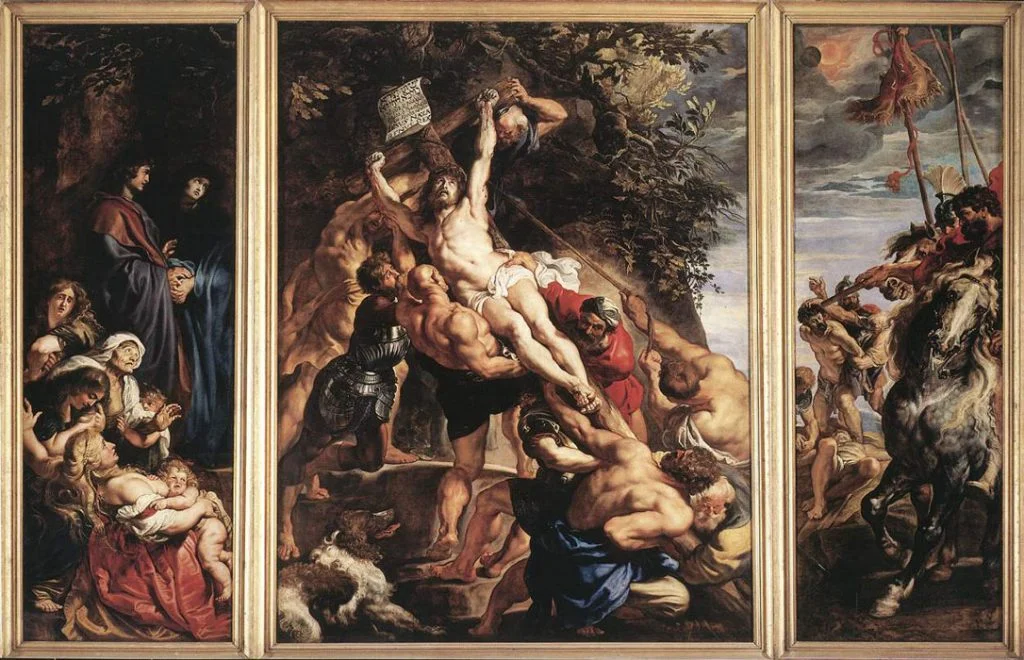
2. Samson and Delilah
- Date Created: 1609-1610
- Dimensions: 185 × 205 centimeters (73 × 81 inches)
- Location: The National Gallery, London, United Kingdom
Samson and Delilah is a painting that depicts the moment that a young man cuts Samson’s hair after he fell asleep on Delilah’s lap.
In the story from the Old Testament, Samson had mentioned to his girlfriend that his strength was in his hair, so the Philistines, who had bribed her, eagerly awaited to capture him the moment his hair was cut. The old woman behind Delilah doesn’t play a role in the story but was probably included to symbolize the old Delilah.

3. Assumption of the Virgin Mary
- Date Created: 1626
- Dimensions: 490 × 325 centimeters (190 × 128 inches)
- Location: Cathedral of Our Lady, Antwerp, Belgium
The Assumption of the Virgin Mary is a painting that was commissioned to decorate the high altar Cathedral of Our Lady in Antwerp, the main church in the city where Rubens lived and worked most of his life.
It depicts the assumption of Mary who is lifted by a choir of angels. The painting remarkable still hangs in the exact position today as it was put shortly after it was completed in the year 1626!
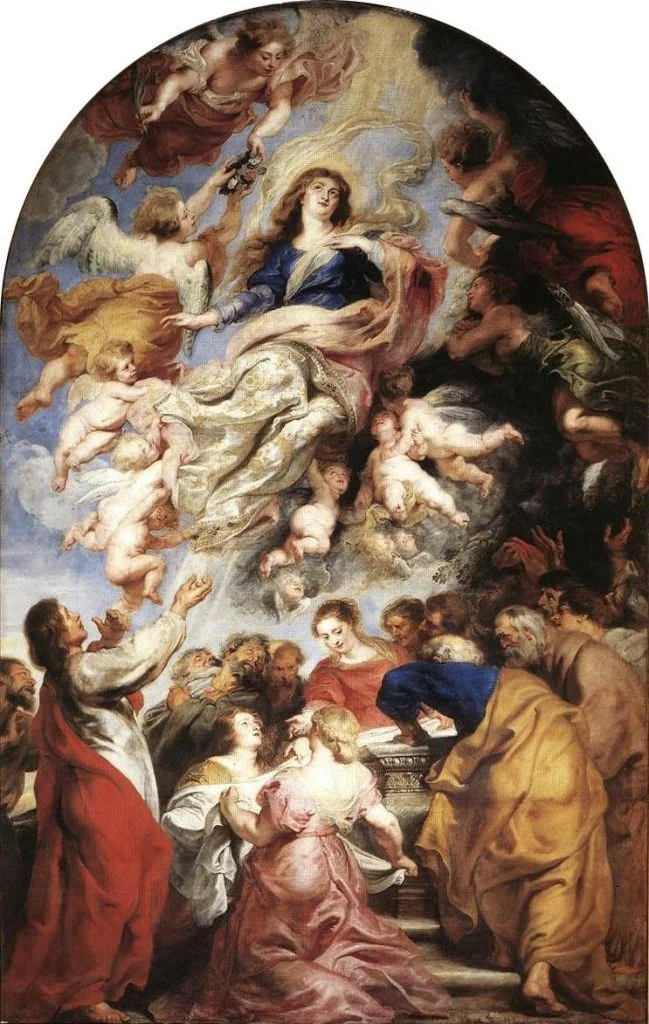
4. The Three Graces
- Date Created: 1630-1635
- Dimensions: 221 × 181 centimeters (87 × 71 inches)
- Location: Museo del Prado, Madrid, Spain
The Three Graces is one of the most famous Peter Paul Rubens paintings because he created it for his personal collection. That’s the reason why it took about 5 years to complete as he completed multiple (paid) commissions in between.

The mythological painting depicts 3 Greek goddesses, one of charm, charity, and gratitude. It’s one of the multiple paintings that Rubens created on the same subject. After leaving his private collection, it moved to the Royal Alcazar of Madrid in 1666 before being displayed at the Prado Museum in the same city.
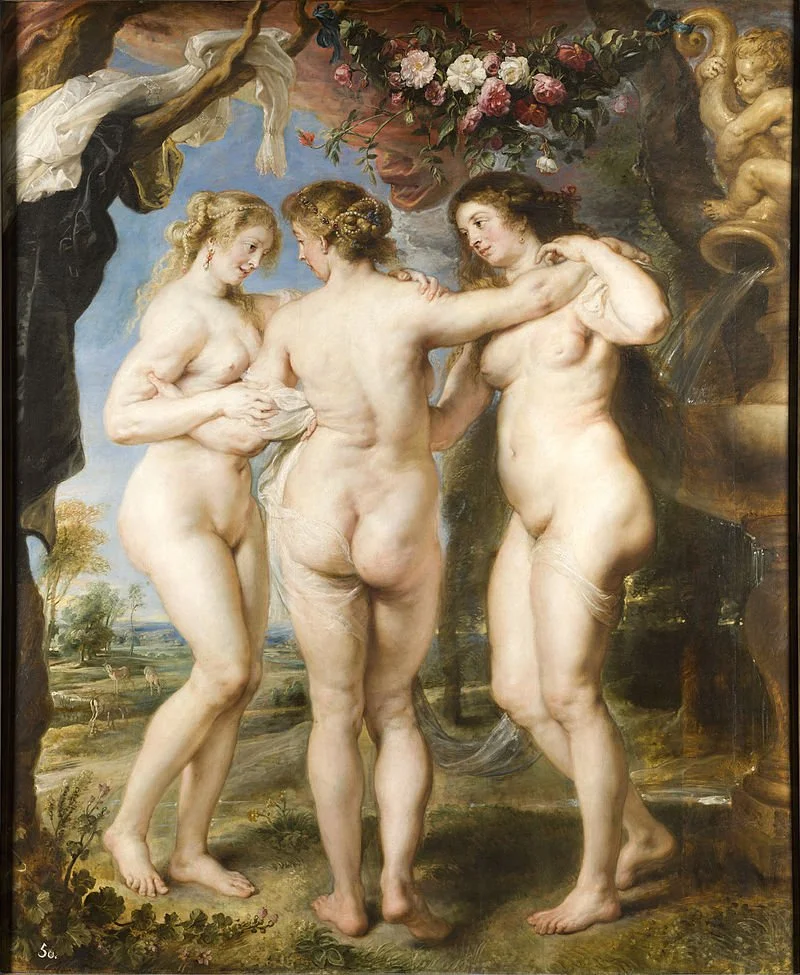
5. Honeysuckle Bower
- Date Created: 1609
- Dimensions: 178 × 136.5 centimeters (70 × 53.7 inches)
- Location: Alte Pinakothek, Munich, Germany
The Honeysuckle Bower is one of the paintings that Rubens created shortly after returning from Italy in 1609. That year, he married the daughter of an important figure in Antwerp, the 18-year-old Isabella Brant.
This painting depicts the couple surrounded by various marriage symbols, including the holding of their right hands. They also sit in a bower of honeysuckle, a traditional symbol of love.
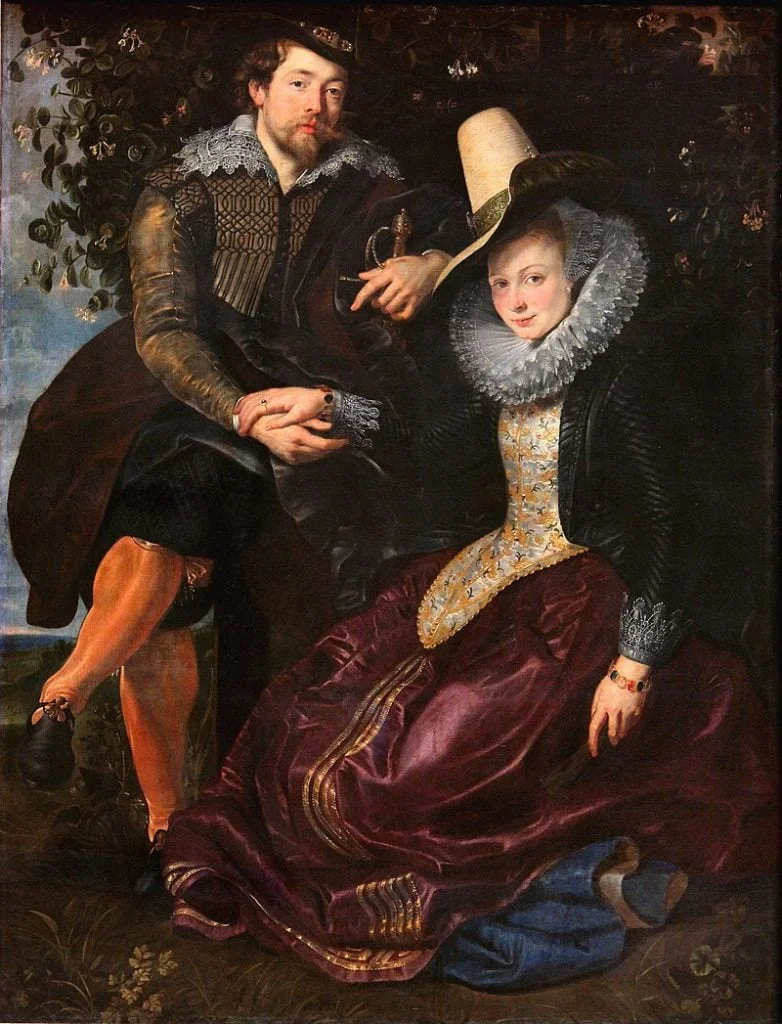
6. A View of Het Steen in the Early Morning
- Date Created: 1636
- Dimensions: 137 x 235 centimeters (54 x 93 inches)
- Location: National Gallery, London, United Kingdom
A View of Het Steen in the Early Morning is also referred to as “Château de Steen with Hunter” and depicts the estate called “Het Steen” near Brussels that Rubens bought during the final years of his life.
It’s another rare example of a painting he created for himself rather than a commission for somebody else. This painting had a great influence on British Romantic Artist and landscape painter John Constable.
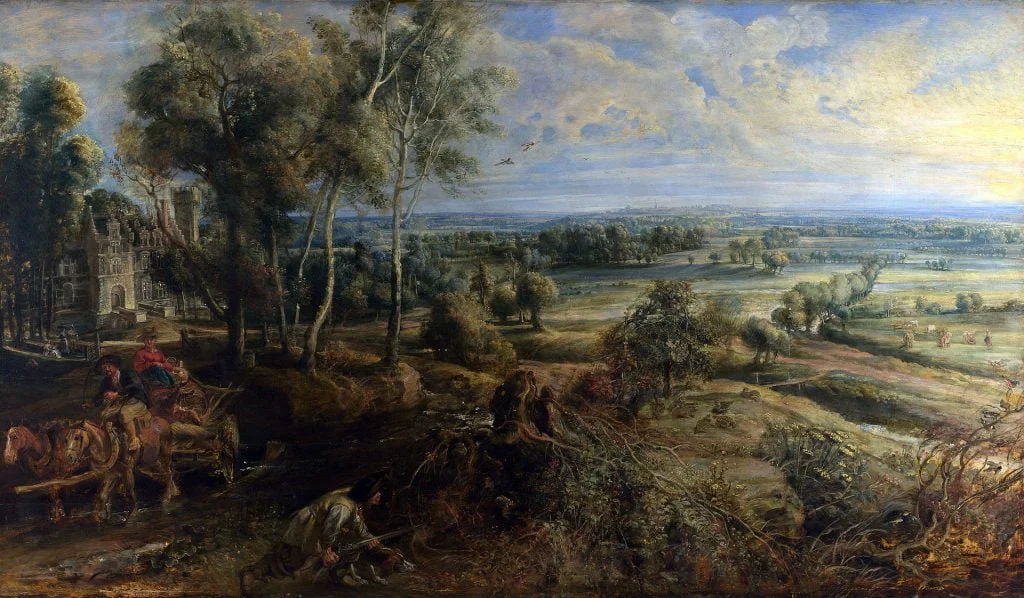
7. The Arrival of Marie de Medici at Marseille
- Date Created: 1622-1625
- Dimensions: 394 x 295 centimeters (155 x 116 inches)
- Location: Louvre Museum, Paris, France
The Arrival of Marie de Medici at Marseille is also known as “The Disembarkation at Marseilles” and is one of the 24 paintings commissioned by Marie de Medici to decorate the Luxembourg Palace in Paris.
The “Marie de’ Medici cycle,” as these 24 paintings are called, depicts various important moments in the life of the Queen Consort of France and her husband Henry IV. This painting and the 23 others in the cycle are now on public display at the Louvre in Paris.
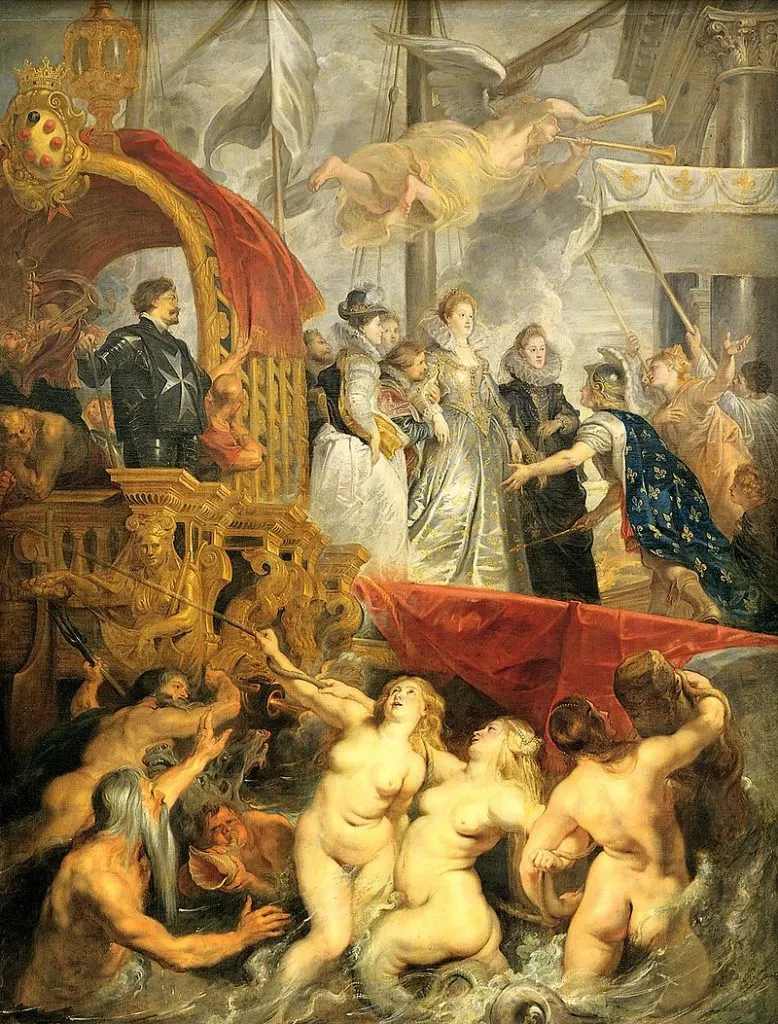
8. The Garden of Love
- Date Created: 1633
- Dimensions: 199 x 286 centimeters (78 x 112 inches)
- Location: Museo del Prado, Madrid, Spain
The Garden of Love is another painting that moved to the Royal Palace in Madrid in the year 1666. It even hung in the King of Spain’s bedroom back then when it was still referred to as “The Garden Party.”
And that’s exactly what this painting depicts, an over-the-top garden party that emphasizes the grandeur and splendor of the people depicted, in combination with various allegories and extra symbolism.
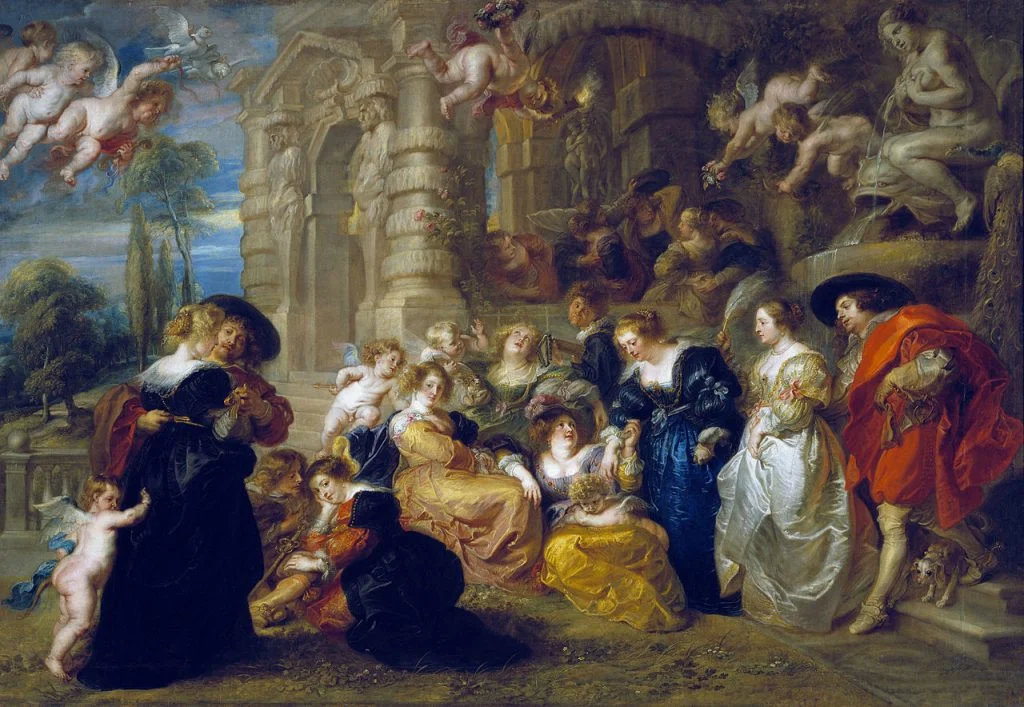
9. Consequences of War
- Date Created: 1638-1639
- Dimensions: 206 × 345 centimeters (81 × 136 inches)
- Location: Pitti Palace, Florence, Italy
Consequences of War is also referred to as “The Horrors of War” and was commissioned by, Ferdinando II de’ Medici, the Grand Duke of Tuscany between 1621 and 1670.
The paintings symbolize the horrors of the Thirty Years’ War which was raging across Europe between 1618 and 1648. It didn’t leave the wonderful city of Florence and can still be found on display at the Pitti Palace in the city.
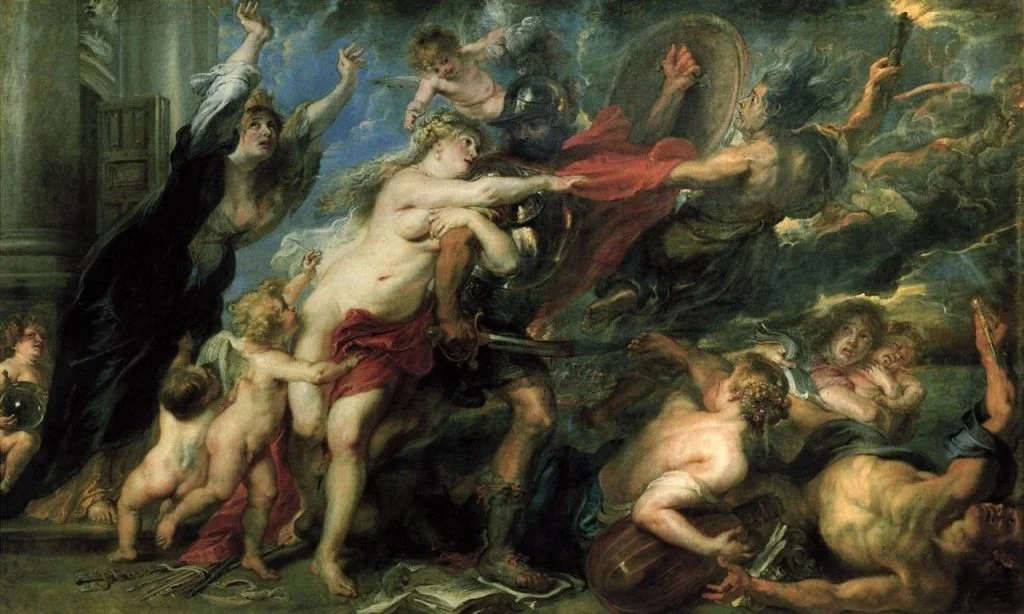
10. The Feast of Venus
- Date Created: 1636-1637
- Dimensions: 217 × 350 centimeters (85 × 140 inches)
- Location: Kunsthistorisches Museum Wien, Vienna, Austria
The Feast of Venus is a painting that depicts the Ancient Roman festival called “Veneralia.” This festival was held on April 1 every year in honor of Venus Verticordia who represented the Roman goddess Venus.
The painting was influenced by one of the masterpieces of Renaissance artist Titian called The Worship of Venus (1518-1519). The painting brings together all the elements that define Baroque Art.

11. The Union of Earth and Water
- Date Created: 1618
- Dimensions: 222.5 × 180.5 centimeters (87.6 × 71.1 inches)
- Location: Hermitage Museum, Saint Petersburg, Russia
The Union of Earth and Water depicts Cybele as the personification of Earth as she is holding the horn of plenty. Neptune is depicted as the personification of water in the center.
The whole scene is supposed to symbolize fertility, wealth, and prosperity, and the relationship with water is pretty important for the port city of Antwerp. Especially back in the 17th century when the river Scheldt was blocked by the Dutch.
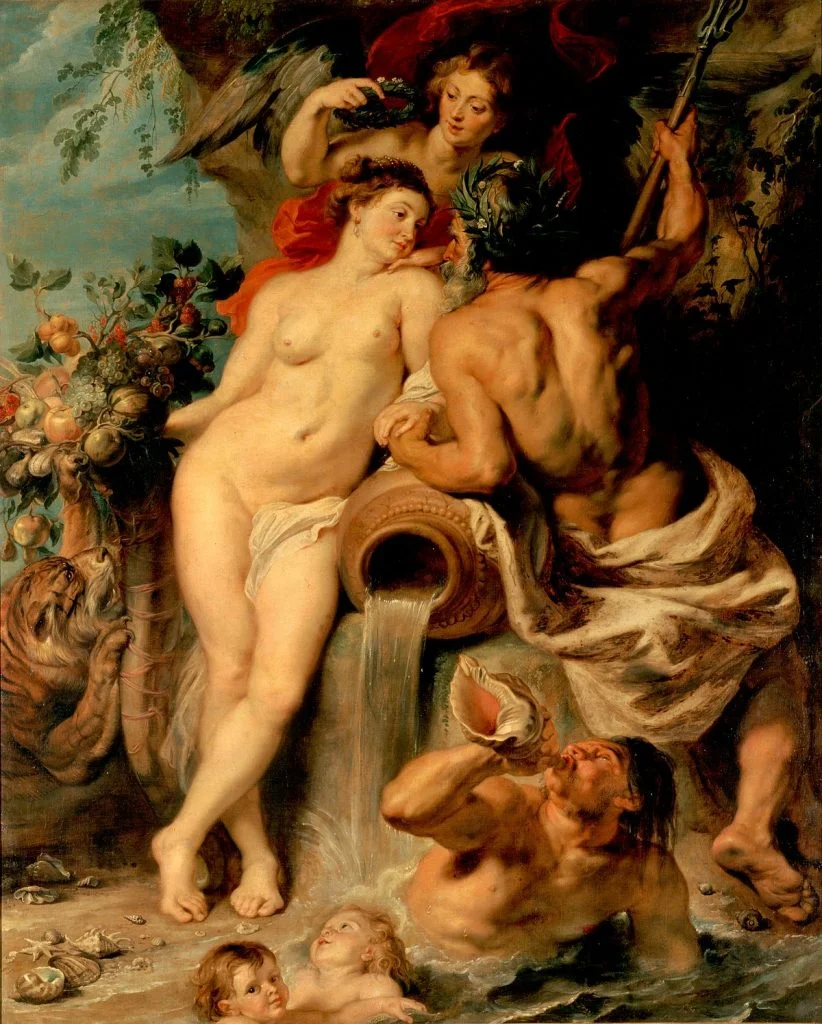
12. The Garden of Eden with the Fall of Man
- Date Created: 1615
- Dimensions: 74.3 × 114.7 centimeters (29.3 × 45.2 inches)
- Location: Mauritshuis, The Hague, Netherlands
The Garden of Eden with the Fall of Man is also referred to as “The Earthly Paradise with the Fall of Adam and Eve” and was created as a collaboration between two of the most renowned artists of the time.
The figures in the painting were painted by Peter Paul Rubens, and the fauna and flora were painted by Jan Brueghel the Elder. The scene depicts the moment before Adam and Eve consumed the forbidden fruit which initiates the fall of man.
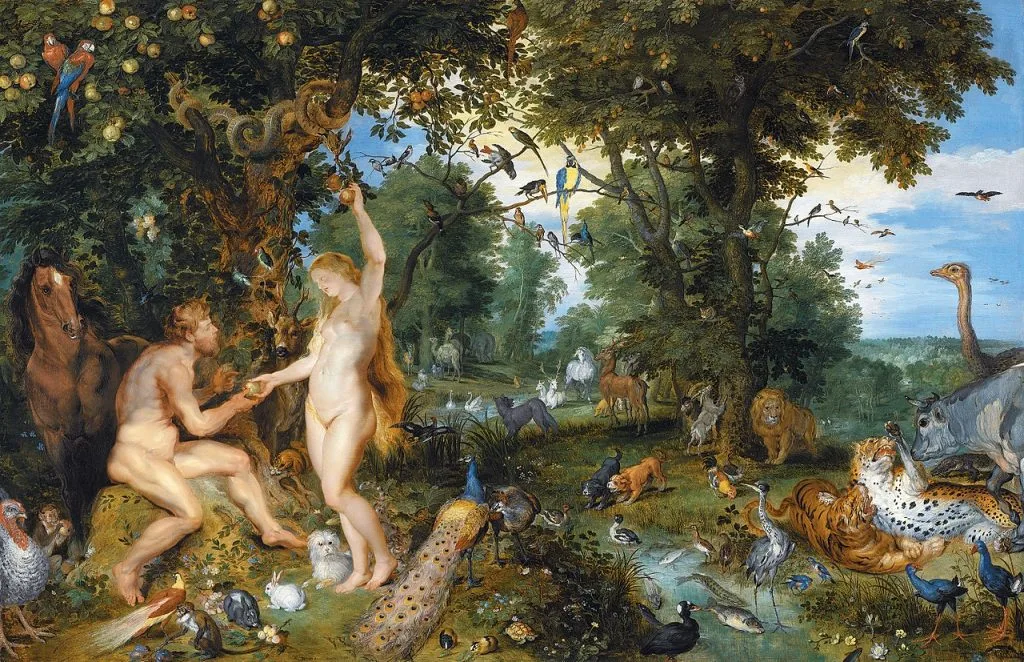
13. The Rape of the Daughters of Leucippus
- Date Created: 1618
- Dimensions: 224 × 209 centimeters (88 × 82 inches)
- Location: Alte Pinakothek, Munich, Germany
The Rape of the Daughters of Leucippus depicts the mortal Castor and the immortal Pollux as they abduct Phoebe and Hilaeira, the daughters of Leucippus of Messenia.
The little winged child can be seen with black wings, which represent the ultimate faith of both men after they commit their crimes. The painting ended up in Germany in the year 1716 and is now on public display in an art museum in Munich.

14. Venus and Adonis
- Date Created: 1635-1638
- Dimensions: 197.5 x 242.9 centimeters (77 x 95 inches)
- Location: Metropolitan Museum of Art, New York City, United States
Venus and Adonis is another painting depicting a popular mythological scene that was depicted often in both the Renaissance and Baroque periods. It’s one of the most famous Peter Paul Rubens paintings which was again inspired by a similar painting created by Titian.
It depicts the scene in which Venus, accompanied by Cupid, tries to hold back Adonis before he goes hunting. In the story, Adonis is killed later that day.
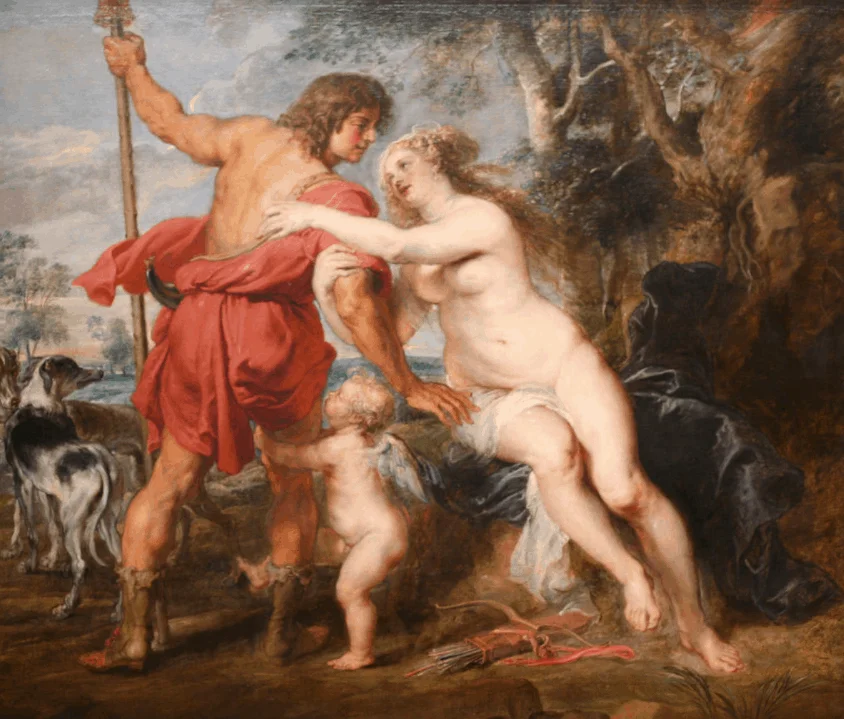
15. Massacre of the Innocents
- Date Created: 1611-1612
- Dimensions: 142 x 182 centimeters (55 x 71 inches)
- Location: Art Gallery of Ontario, Toronto, Canada
The Massacre of the Innocents is officially the most expensive of all Peter Paul Rubens paintings. It depicts the biblical Massacre of the Innocents of Bethlehem as it is told in the Gospel of Matthew.
The painting was long thought to be of another artist and was only recently attributed to Rubens. It was sold shortly after at Sotheby’s in London on July 10, 2002, for a record amount of £49.5 million (USD 76.2 million), the most ever paid for a Rubens painting!

